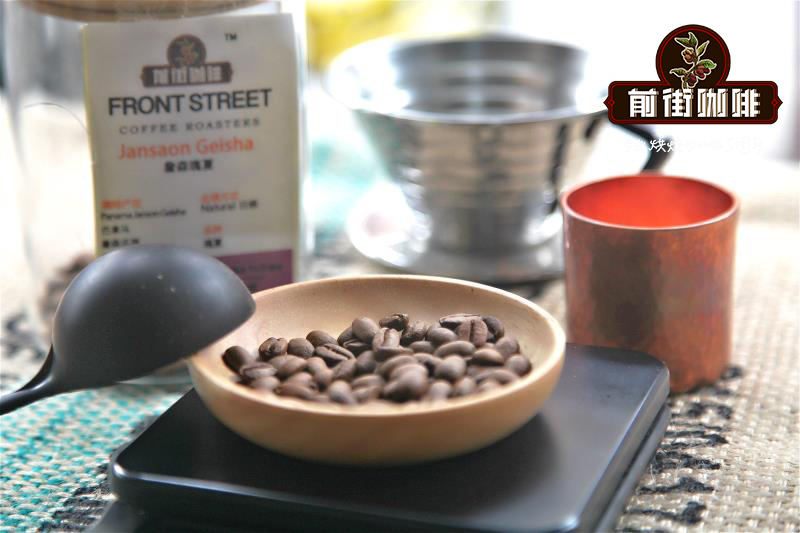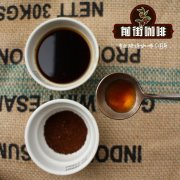Understanding the flavor characteristics of sun-dried beans in Las Lajas manor treated with Costa Rican honey

Professional coffee knowledge exchange more coffee bean information please follow the coffee workshop (Wechat official account cafe_style)
Costa Rican coffee is usually very pure and sweet, but the alcohol thickness tends to be light and elegant. In recent years, many processing plants have begun to produce coffee with a variety of tastes and styles. Coffee has been grown in Costa Rica since the early 19th century, and after Costa Rica became independent from Spain in 1821, the then self-government distributed free coffee seeds to farmers to encourage coffee cultivation.
Costa Rica, with its fertile volcanic soil and good drainage, is the first country in Central America to grow coffee and bananas for commercial value. Coffee and bananas are the country's main exports.
Coffee was introduced into Costa Rica from Cuba in 1729 and today its coffee industry is one of the most well-organized industries in the world with a yield of 1700 kg per hectare. Costa Rica has only 3.5 million people, but there are 400m coffee trees, and coffee exports account for 25 per cent of the country's total exports. Costa Rica has also benefited from the establishment of the Central American Society for Agricultural Research in Tarasu, which is an important international research center.
High-quality Costa Rican coffee is called "extra hard beans". This kind of coffee can grow above 1500 meters above sea level. Altitude has always been a problem for coffee growers. The higher the altitude, the better the coffee beans, not only because the higher altitude can increase the acidity of the coffee beans and thus increase the flavor of the coffee beans, but also because the night temperature at the higher altitude is lower, which makes the trees grow slowly, thus making the coffee beans have a stronger flavor. In addition, due to the sufficient rainfall caused by the drop at high altitude, it is also very beneficial to the growth of coffee trees.
Tarasu, located in the south of the country's capital, San Jos é, is one of the most valued coffee growers in the country. La Minita Tarrazu coffee is a famous local product, but its production is limited, about 72600 kilograms a year. It is grown on a piece of land called La Minita, which is owned by the last three generations of the McAlpine family in the UK. In fact, this land can produce more than 450 tons of coffee a year. But Tarasu Latin America coffee is grown without artificial fertilizers or insecticides, and its harvesting and selection are done by hand, in order to avoid some damage to coffee beans caused by air spray selection.
Other coffees worth mentioning are Juan Vinas,PR, H.Tournon, Windmill,SHB, Monte bello and Ssnta Rosa. Fine coffee is generally grown in Geredia and the central canyon. Another striking type of coffee is Sarchi (one of the five towns representing Costa Rica's Coffee Road), which grows on the slopes of the Poas Volcano volcano, 53km from San Jose.
Sun treatment, receive normal sunshine on an elevated bed, sun-dried beans can also be called black pearls, why do I think it is with? This is related to the appearance of sun beans after harvest, directly with the peel and pulp after drying. The darkest thing in the picture above is sun beans.
This is the most environmentally friendly way to do no harm to the land, but the sun drying process is in urgent need of careful care, a little careless, there will be a rotten smell of excessive fermentation, not everyone likes it. Sun-dried peel and pulp were used as compost before, but in the past year or two, more and more coffee farmers have turned the skin and pulp of sun-dried coffee beans into a kind of tea called "Cherry Tea" cherry tea, which is a fashionable Western tea.
Property Characteristics: farm characteristics Farm Farm name: Las Lajas Farm Farmer Farm owner: Dona Francisca Region producing area: Central Valley Central Valley
Country country: Costa Rica Costa Rica Altitude altitude: 1380 m Annual Precipitation annual rainfall: 2500-2700m mm
Soil soil quality: Volcanic clay volcanic clay Top Jury Descriptions comment: baking degree measured by cup for 60 seconds at the beginning of an explosion (Cinnamon)
Aroma aroma / flavor flavor: Sesame peanut, vanilla, brown sugar, caramel, fermentation flavor, forage sweet and sour quality: plum acid, peach, cherry, fruit sour wind, not strong eyes
Complex complexity and other other: excellent cleanliness, low complexity, sweet aftertaste appears later, cool with the sweetness of water pear
Coffee Characteristics: coffee characteristic Variety Variety: Catuai Kaduai
Processing System treatment: Perla Negra: Natural process, turned normally on raised beds sun treatment
Important Notice :
前街咖啡 FrontStreet Coffee has moved to new addredd:
FrontStreet Coffee Address: 315,Donghua East Road,GuangZhou
Tel:020 38364473
- Prev

Explore the secret of the wonderful manor, the protagonist manor of Finca La Colina in Guatemala
Professional coffee knowledge exchange more information about coffee beans please follow the coffee workshop (Wechat official account cafe_style) Guatemala is located in Central America. This is a country with tropical rain forest weather, high humidity and warm climate all year round. It formed Central American volcanoes along with Nicaragua, El Salvador, Honduras, Costa Rica and Panama.
- Next

Brief introduction of Costa Rican boutique coffee manor-Don Mario manor honey treatment
Professional coffee knowledge exchange more coffee bean information Please pay attention to the coffee workshop (Wechat official account cafe_style) the Costa Rican coffee growing area has rich volcanic ash, mild and suitable temperature, and stable and abundant rainfall, which is one of the factors that make coffee a major agricultural product in Costa Rica. Its coffee beans are all Arabica species. Pure flavor, pleasant aroma, no
Related
- Does Rose Summer choose Blue, Green or Red? Detailed explanation of Rose Summer Coffee plots and Classification in Panamanian Jade Manor
- What is the difference between the origin, producing area, processing plant, cooperative and manor of coffee beans?
- How fine does the espresso powder fit? how to grind the espresso?
- Sca coffee roasting degree color card coffee roasting degree 8 roasting color values what do you mean?
- The practice of lattes: how to make lattes at home
- Introduction to Indonesian Fine Coffee beans-- Java Coffee producing area of Indonesian Arabica Coffee
- How much will the flavor of light and medium roasted rose summer be expressed? What baking level is rose summer suitable for?
- Introduction to the characteristics of washing, sun-drying or wet-planing coffee commonly used in Mantenin, Indonesia
- Price characteristics of Arabica Coffee Bean Starbucks introduction to Manning Coffee Bean Taste producing area Variety Manor
- What is the authentic Yega flavor? What are the flavor characteristics of the really excellent Yejasuffi coffee beans?

